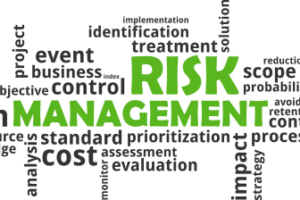
Five Steps of the Risk Management Process 2025
Five Steps of the Risk Management Process 2025
The ability to anticipate, prepare for, and respond to risks has never been as important as it is today. In the current unpredictable business environment, risks affect organisations of all sizes and industries. Market volatility, technological disruptions, supply chain interruptions, and regulatory changes are common threats. Risk management as a structured practice helps prioritise, evaluate, and manage potential risks before they disrupt operations or growth. Although technological advances in 2025 have improved how risks are detected and minimised, the core processes remain unchanged. These principles form the foundation of resilience that stands strong against changing conditions.
Risk Management Process
The risk management process is a structured method for handling risks and uncertainties. It uses proactive techniques and constant checks to ensure organisations are ready to face any challenge. By 2025, AI-based analytics and machine learning have improved how organisations monitor risks through dashboards and predictive modelling. However, the principle remains the same: knowing what risks exist helps protect business goals.
Here are the five essential steps of the risk management process:
1. Identify the Risk
The first step involves identifying what might go wrong. These risks can be internal, like equipment failure, employee turnover, or data breaches, or external, such as economic downturns, new competitors, or extreme weather events. Businesses in 2025 use tools like machine learning algorithms and IoT sensors to provide early warnings. Predictive maintenance systems, for example, help address equipment issues before breakdowns occur. Setting up a detailed risk register ensures no threat is overlooked.
2. Analyse the Risk
Once identified, risks should be examined to understand their cause and implications. The analysis focuses on the probability and potential impact of each risk. In today’s digital world, scenario analysis and big data analytics provide better measurement of risks. This step also helps classify risks by priority—high, medium, or low—so organisations can allocate resources efficiently.
3. Evaluate or Rank the Risk
Not all risks pose equal threats. This step ranks risks based on their likelihood and potential impact, often using a risk matrix. Prioritisation helps decision-makers focus on the most urgent issues. For example, a high-probability, high-impact risk is addressed before a less likely and less severe one. By 2025, real-time dashboards and automated scoring systems have made this ranking faster and more accurate.
4. Treat the Risk
After prioritising risks, organisations decide on the best treatment strategy. Common methods include:
- Avoidance: Eliminating the activity that causes risk.
- Reduction: Implementing controls to lower the likelihood or impact.
- Transfer: Outsourcing or insuring against the risk.
- Acceptance: Acknowledging the risk and preparing to handle its consequences.
Technology plays a key role in treatment. Cybersecurity frameworks, supply chain integrity tools, blockchain systems, and training simulations prepare employees to handle crises in 2025.
5. Monitor and Review the Risk
Risk management is an ongoing process. As the business environment evolves, new threats arise. Monitoring involves regularly reviewing risks, updating them with changing conditions, and spotting new issues. In 2025, AI-driven reporting and automated systems allow organisations to track risks in real time and respond immediately. Regular reviews ensure the risk management plan stays relevant and effective.
The Basics of the Risk Management Process Stay the Same
Tools and technologies have changed how risks are managed, but the underlying principles remain constant. Anticipation, readiness, and flexibility are as important today as they were decades ago. What has improved is the speed, accuracy, and foresight with which risks are addressed, thanks to technological advancements.
Risk Management Evaluation
Evaluating the effectiveness of risk management is as important as implementing it. This involves:
- Reviewing how thoroughly risks were identified.
- Ensuring the analysis and prioritisation are accurate.
- Checking if treatment strategies reduced risk impact.
- Verifying that monitoring systems detected changes early.
Feedback from previous incidents helps organisations strengthen their plans. By 2025, many businesses use AI-driven audits, feedback loops, and predictive evaluations to optimise risk management.
What is Risk Management?
Risk management is a systematic approach to identifying, analysing, and responding to threats. These threats can damage operations, assets, or reputation. The process helps decision-makers foresee risks and take informed action. It is not just about avoiding danger but about managing risks to support innovation and growth while ensuring safety and compliance.
Why is Risk Management Important?
Risk management protects resources, supports decision-making, and ensures business continuity. Without a solid risk plan, organisations are vulnerable to disruptions that lead to financial loss, reputational damage, and operational delays. In a globalised world, risks spread quickly. A cyberattack can go viral in hours, or supply chain issues can originate halfway across the world. Effective risk management helps businesses act swiftly, minimise losses, and gain a competitive edge.
About GRMI
GRMI is one of the most respected educational organisations worldwide, focused on preparing professionals for modern risk environments. GRMI’s industry-aligned curriculum and global faculty spanning over 25 countries ensure students access exclusive case studies. The programme bridges theoretical knowledge with practical applications in risk management.
By 2025, GRMI remains a top destination for aspiring risk professionals. The institute’s courses introduce advanced topics like cyber risk, sustainability risk, and geopolitical risk. GRMI offers diploma and certification courses that equip learners with cutting-edge tools, analytical insights, and global expertise to succeed in the field.
Conclusion
Risk management is essential in today’s fast-changing world. While technology has improved how risks are tracked, the core steps of identifying, analysing, and managing risks remain the same. At GRMI, we equip professionals with the knowledge and tools to handle modern risks like cyber threats and sustainability challenges. By building strong risk management skills, you can help organisations grow confidently while staying prepared for uncertainties. Start your journey with GRMI and lead the way in risk management.
FAQ's
Q1: What makes risk management so important for businesses?
Ans: In order to maintain safety and business continuity, risk management assists businesses in detecting, evaluating, and controlling dangers.
Q2: Can risk management procedures be enhanced by technology?
Ans: Absolutely, real-time dashboards, AI, and machine learning improve the speed and precision of risk identification and management.
Q3: How frequently should risks be examined and tracked?
Ans: Risks should be regularly reviewed and evaluated in order to adjust for emerging threats and shifting circumstances.
Q4: Can professionals with less experience benefit from GRMI’s program?
Ans: Yes , GRMI’s courses, which emphasise applied learning and knowledge relevant to a career, are intended for both recent graduates and working professionals.
You may also like

Best Short Term Courses in IT for Freshers

What is the Best Course in Risk Management in India?


